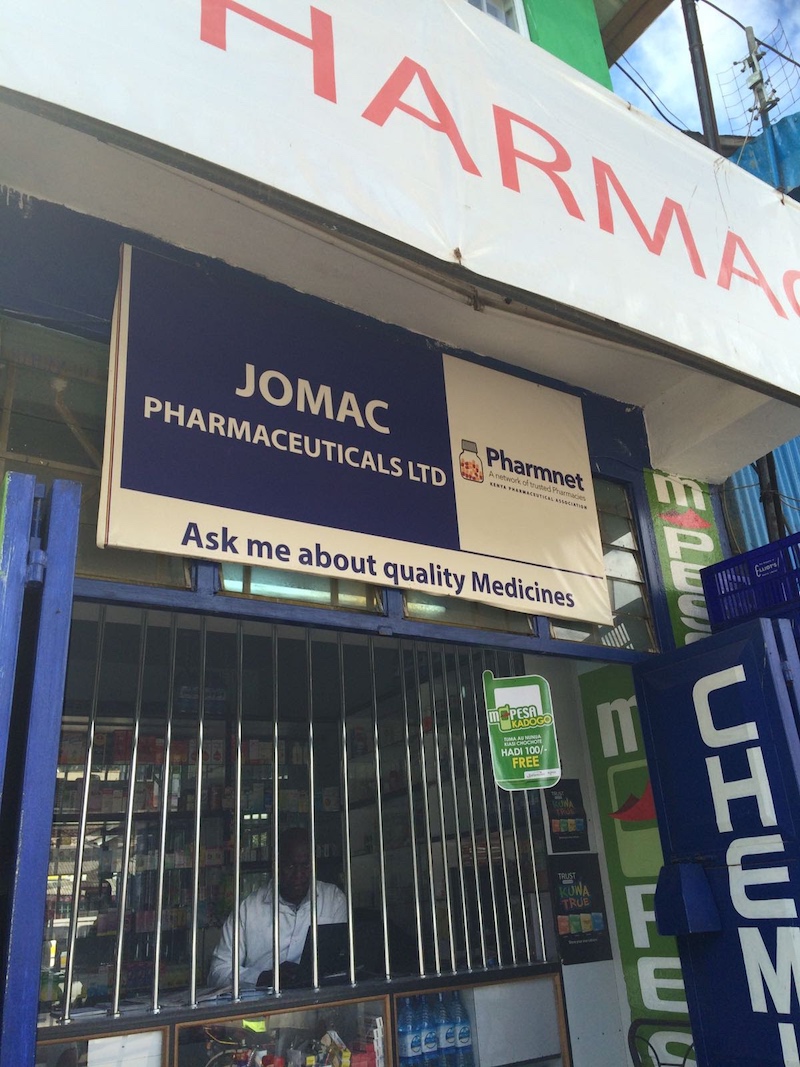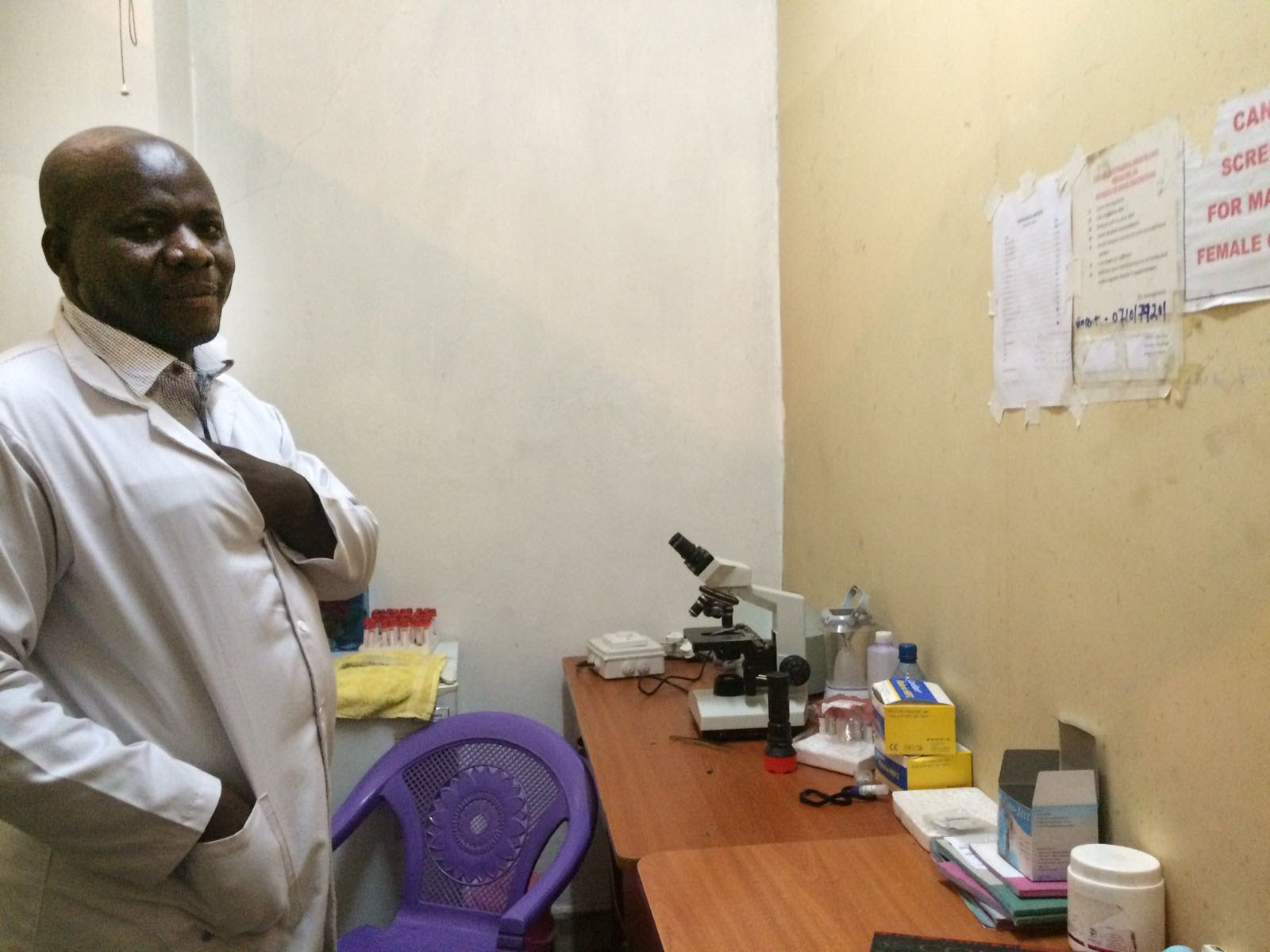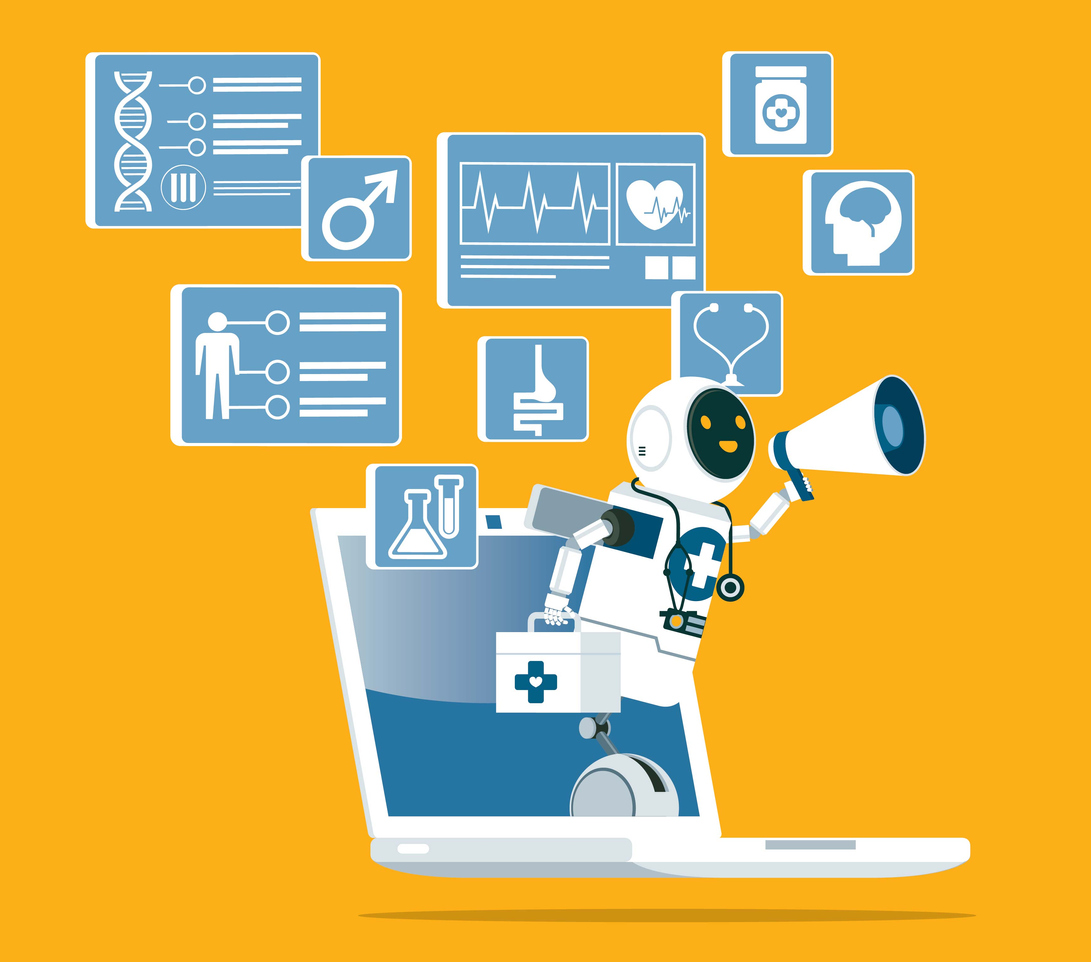
A short drive out of Nairobi’s city centre takes you to Kibera, an extremely poor community in the outskirts of the Kenyan capital, and home to around 250,000 people. The government owns this land but does not recognise the settlement. Despite its considerable size and vicinity to the capital, the 13 villages of Kibera lack even the most basic services and infrastructure, such as running water, paved roads and healthcare. Electricity is just being introduced in some parts, and sanitation remains a problem, with five or six households sharing a common toilet and bathroom.
There is a sense of congestion upon entering Kibera. Cars and old trucks drive on unmade, bumpy roads. People push around barrels with yellow plastic containers of fresh water for sale, vegetable stands are scattered along the streets, and barbershops and hairdressers take up every other shack. On the walls surrounding the settlement, informative messages on drug abuse are painted in colourful graffiti.
“In a country with an estimated population of 47 million, internet penetration stood at 90% by the end of last year, and the total number of mobile money accounts was around 32 million.”
Although basic services are not readily available in Kibera, internet access is easy to come by. In a country with an estimated population of 47 million, internet penetration stood at 90% by the end of last year, and the total number of mobile money accounts was around 32 million, according to the Communications Authority of Kenya. Low-income countries have undergone a rapid development of mobile infrastructure during the last decade. Due to the growing number of cell phone users, improved internet coverage, as well as the rising affordability of these technologies in resource-limited environments, health information technologies might just be the way to reach formerly under-served patients.
The expansion of mobile services might reduce administrative challenges and replace some traditional interactions with the healthcare system. Health information technologies could replace the costly development of traditional healthcare infrastructure and facilities, and offer the means to do follow-ups, monitor health-related activities, and facilitate data acquisition. They would also facilitate the analysis of behavioural trends in the use of healthcare resources, thus decreasing the workload and costs to the healthcare system.

Pharmacy in Kibera.
“Mobile technologies have the potential to play a unique role in advancing healthcare, particularly in resource-limited or rural settings where communities have skipped the traditional development of healthcare infrastructure.”
My visit to the local health clinic in the Bombolulu village underlines the need to somehow bolster patient access to health services in Kibera. The clinic stands right in the centre of the settlement, surrounded by open sewage systems. From a hygiene perspective, it seems paradoxical to have a health facility in the midst of it all. The clinic is a satellite of the Shining Hope for Communities (SHOFCO) Main Clinic, located in another part of Kibera. It is privately funded and all medical staff operating there are locals. There are four other satellite clinics, and if referral is needed patients are assisted with fees for travel and admittance to the Kenyatta National Hospital or Mbagathi District Hospital in Nairobi.

The health clinic in Kibera´s Bombolulu village.
“The expansion of mobile services might reduce administrative challenges and replace some traditional interactions with the healthcare system.”
Inside the clinic’s small, poorly lit consultation room, I meet Dr Anderson Kyalo, who explains how the clinic operates. The work there appears to be mainly paper based; patient records and what seem to be prescriptions are placed on his tiny desk by a colleague during our brief discussion. Dr Kyalo is the only doctor working this day and he expects to see around 50 patients. The clinic only treats outpatients and they provide no health services at night, nor are there any emergency wards in this part of Kibera. This poses a problem, Dr Kyalo says. The clinic is open 10 hours a day during the week and 8 hours on Saturdays. His colleagues are two community workers with some medical and health education, who conduct follow-ups through home visits and health talks with the patients. The rest of the staff consists of a pharmacist, a nurse, and a laboratory technician.
It is evident that there are many socio-economic and logistical challenges to optimum health and medicines safety in Kibera. However, if fully implemented and with staff trained for them, electronic and mobile health systems – so-called e-Health and m-Health – could supply the means to improve health management. In addition to providing user-friendly platforms for smooth communication between healthcare providers and patients, digital health technologies would benefit settings like Kibera in a number of other ways. Round-the-clock electronic access to medical sources would increase the availability of information at the point of care, and help clinicians keep up-to-date with best practices and treatment guidelines. Moreover, electronic handling of patient data could reduce the need for bulky paper documentation, and the use of clearly legible, electronic prescriptions could help avoid certain medical errors.
As I reflect on these issues, I continue my visit. Only a few minutes’ walk from the clinic stands the only registered pharmacy in this part of Kibera, where pharmacist Jorma Ojwang is at work. Like many healthcare workers in Kibera, Mr Ojwang is a former resident of the area. When asked why he chooses to work here, he shrugs his shoulders in resignation and answers, almost as if he has no choice: “This is my people, you know. I feel for them.” We discuss how the vulnerable population of Kibera afford the medications they’re prescribed, and how access to medications and compliance to treatment are ensured when medicines are not in stock.
At the staff side of the pharmacy, between the shelves in the stockroom, two chairs are placed for occasional health talks and follow-ups with patients. Communication about adverse effects is straightforward and direct, according to Mr Ojwang. Patients are usually informed of what mild adverse effects might be expected with a certain type of drug. They are also made aware that they should come back to the pharmacy for further advice and dialogue before stopping their treatment altogether, if they experience a side effect. In case a suspected adverse effect becomes known to the pharmacist there are reporting forms available, but unfortunately they are locked away in a cupboard in the back of the pharmacy.
This is another area where health information technology could prove its value. By supplying novel health management tools, mobile technology could not only boost overall health education in Kibera but also improve patient compliance and reporting of adverse effects.
Mobile technologies have the potential to play a unique role in advancing healthcare, particularly in resource-limited or rural settings where communities have skipped the traditional development of healthcare infrastructure, and leapt into modern technology. To achieve maximum impact, we need to take a fresh look at the opportunities and challenges lying ahead, and come up with innovative approaches tailored to the setting at hand. Sometimes we have no other choice than to walk down a bumpy road that no one has paved before us – in the most literal sense.




